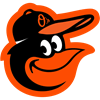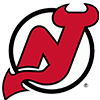Even though they were a bit down in July, stolen bases remain a hot topic, especially in fantasy baseball. They've always been integral to rotisserie league strategy, but dwindling totals made them an afterthought in points leagues, and DFS play.
With the surge in stolen bases, pilfers are again relevant in just about every fantasy format. Predicting them based on matchups can be a sage manner to capture critical points.
I've been thinking about this lately, so I designed a crude study to get an initial feel for how this could be done. The objective is for fantasy team managers to incorporate it into their roster decisions, so the process can't be too complicated or time consuming.
Stolen bases per game is straightforward. This leaves out caught stealing, hence attempted steals, but we care mostly about successful tries. Stats are available on a monthly basis, so that's a reasonable means to parse the data.
Offense Stolen Bases per Game
| Team | March/April | May | June | July | Season | |
|---|---|---|---|---|---|---|
| 1 | Arizona Diamondbacks | 0.862 | 1.037 | 1.037 | 1.042 | 0.991 |
| 2 | Atlanta Braves | 0.741 | 0.586 | 1.080 | 0.913 | 0.817 |
| 3 | Baltimore Orioles | 1.071 | 0.536 | 0.625 | 0.423 | 0.670 |
| 4 | Boston Red Sox | 0.379 | 0.769 | 0.750 | 1.087 | 0.726 |
| 5 | Chicago Cubs | 0.926 | 0.714 | 0.640 | 1.038 | 0.830 |
| 6 | Chicago White Sox | 0.621 | 0.448 | 0.731 | 0.609 | 0.598 |
| 7 | Cincinnati Reds | 0.679 | 0.889 | 1.852 | 1.115 | 1.130 |
| 8 | Cleveland Guardians | 1.250 | 0.481 | 0.462 | 1.038 | 0.813 |
| 9 | Colorado Rockies | 0.207 | 0.464 | 0.519 | 0.318 | 0.377 |
| 10 | Detroit Tigers | 0.556 | 0.667 | 0.222 | 0.360 | 0.453 |
| 11 | Houston |
Even though they were a bit down in July, stolen bases remain a hot topic, especially in fantasy baseball. They've always been integral to rotisserie league strategy, but dwindling totals made them an afterthought in points leagues, and DFS play.
With the surge in stolen bases, pilfers are again relevant in just about every fantasy format. Predicting them based on matchups can be a sage manner to capture critical points.
I've been thinking about this lately, so I designed a crude study to get an initial feel for how this could be done. The objective is for fantasy team managers to incorporate it into their roster decisions, so the process can't be too complicated or time consuming.
Stolen bases per game is straightforward. This leaves out caught stealing, hence attempted steals, but we care mostly about successful tries. Stats are available on a monthly basis, so that's a reasonable means to parse the data.
Offense Stolen Bases per Game
| Team | March/April | May | June | July | Season | |
|---|---|---|---|---|---|---|
| 1 | Arizona Diamondbacks | 0.862 | 1.037 | 1.037 | 1.042 | 0.991 |
| 2 | Atlanta Braves | 0.741 | 0.586 | 1.080 | 0.913 | 0.817 |
| 3 | Baltimore Orioles | 1.071 | 0.536 | 0.625 | 0.423 | 0.670 |
| 4 | Boston Red Sox | 0.379 | 0.769 | 0.750 | 1.087 | 0.726 |
| 5 | Chicago Cubs | 0.926 | 0.714 | 0.640 | 1.038 | 0.830 |
| 6 | Chicago White Sox | 0.621 | 0.448 | 0.731 | 0.609 | 0.598 |
| 7 | Cincinnati Reds | 0.679 | 0.889 | 1.852 | 1.115 | 1.130 |
| 8 | Cleveland Guardians | 1.250 | 0.481 | 0.462 | 1.038 | 0.813 |
| 9 | Colorado Rockies | 0.207 | 0.464 | 0.519 | 0.318 | 0.377 |
| 10 | Detroit Tigers | 0.556 | 0.667 | 0.222 | 0.360 | 0.453 |
| 11 | Houston Astros | 0.714 | 0.333 | 1.148 | 0.720 | 0.729 |
| 12 | Kansas City Royals | 0.655 | 0.778 | 1.077 | 0.920 | 0.850 |
| 13 | Los Angeles Angels | 0.483 | 0.429 | 0.630 | 0.348 | 0.477 |
| 14 | Los Angeles Dodgers | 0.586 | 0.679 | 0.667 | 0.348 | 0.577 |
| 15 | Miami Marlins | 0.931 | 0.667 | 0.333 | 0.250 | 0.561 |
| 16 | Milwaukee Brewers | 0.643 | 0.963 | 0.704 | 0.840 | 0.785 |
| 17 | Minnesota Twins | 0.138 | 0.778 | 0.519 | 0.708 | 0.523 |
| 18 | New York Mets | 0.852 | 0.517 | 0.885 | 0.783 | 0.752 |
| 19 | New York Yankees | 0.793 | 0.621 | 0.391 | 0.520 | 0.594 |
| 20 | Oakland Athletics | 1.000 | 0.862 | 1.154 | 0.826 | 0.963 |
| 21 | Philadelphia Phillies | 0.621 | 0.654 | 1.115 | 0.800 | 0.792 |
| 22 | Pittsburgh Pirates | 1.414 | 0.731 | 0.731 | 0.167 | 0.790 |
| 23 | San Diego Padres | 0.552 | 1.038 | 0.852 | 0.760 | 0.794 |
| 24 | San Francisco Giants | 0.630 | 0.517 | 0.308 | 0.240 | 0.430 |
| 25 | Seattle Mariners | 0.714 | 0.500 | 0.792 | 0.731 | 0.679 |
| 26 | St. Louis Cardinals | 0.655 | 0.893 | 0.391 | 0.444 | 0.607 |
| 27 | Tampa Bay Rays | 0.862 | 1.793 | 0.926 | 0.792 | 1.110 |
| 28 | Texas Rangers | 0.536 | 0.667 | 0.333 | 0.625 | 0.538 |
| 29 | Toronto Blue Jays | 0.679 | 0.821 | 0.667 | 0.542 | 0.682 |
| 30 | Washington Nationals | 0.519 | 0.517 | 0.560 | 1.192 | 0.692 |
Defense Stolen Bases Allowed per Game
| Team | March/April | May | June | July | Season | |
|---|---|---|---|---|---|---|
| 1 | Arizona Diamondbacks | 0.276 | 0.333 | 0.593 | 0.667 | 0.458 |
| 2 | Atlanta Braves | 0.593 | 0.862 | 0.760 | 0.739 | 0.740 |
| 3 | Baltimore Orioles | 0.393 | 0.679 | 0.875 | 0.346 | 0.566 |
| 4 | Boston Red Sox | 0.862 | 0.462 | 0.464 | 0.696 | 0.623 |
| 5 | Chicago Cubs | 0.593 | 0.714 | 0.400 | 1.077 | 0.698 |
| 6 | Chicago White Sox | 1.172 | 0.828 | 1.077 | 1.043 | 1.028 |
| 7 | Cincinnati Reds | 0.786 | 0.370 | 0.852 | 0.615 | 0.657 |
| 8 | Cleveland Guardians | 0.964 | 0.889 | 1.115 | 0.769 | 0.935 |
| 9 | Colorado Rockies | 0.517 | 0.750 | 0.519 | 0.500 | 0.575 |
| 10 | Detroit Tigers | 0.407 | 0.444 | 0.481 | 0.240 | 0.396 |
| 11 | Houston Astros | 0.643 | 0.667 | 0.704 | 0.840 | 0.710 |
| 12 | Kansas City Royals | 0.483 | 0.667 | 0.885 | 0.840 | 0.710 |
| 13 | Los Angeles Angels | 0.690 | 0.536 | 0.556 | 0.261 | 0.523 |
| 14 | Los Angeles Dodgers | 1.414 | 1.214 | 1.083 | 0.391 | 1.058 |
| 15 | Miami Marlins | 0.655 | 1.185 | 0.889 | 0.667 | 0.850 |
| 16 | Milwaukee Brewers | 0.464 | 0.667 | 1.444 | 0.880 | 0.860 |
| 17 | Minnesota Twins | 0.483 | 0.481 | 0.370 | 0.833 | 0.533 |
| 18 | New York Mets | 0.963 | 0.655 | 1.077 | 1.000 | 0.914 |
| 19 | New York Yankees | 0.586 | 0.655 | 0.609 | 0.560 | 0.604 |
| 20 | Oakland Athletics | 1.000 | 0.483 | 0.577 | 0.870 | 0.729 |
| 21 | Philadelphia Phillies | 0.621 | 0.769 | 0.615 | 0.640 | 0.660 |
| 22 | Pittsburgh Pirates | 0.862 | 0.846 | 0.577 | 0.917 | 0.800 |
| 23 | San Diego Padres | 0.966 | 0.615 | 0.556 | 0.520 | 0.673 |
| 24 | San Francisco Giants | 0.815 | 0.931 | 0.500 | 0.720 | 0.748 |
| 25 | Seattle Mariners | 0.679 | 0.571 | 0.750 | 0.731 | 0.679 |
| 26 | St. Louis Cardinals | 0.724 | 0.500 | 0.565 | 0.556 | 0.589 |
| 27 | Tampa Bay Rays | 0.483 | 0.724 | 1.000 | 0.542 | 0.688 |
| 28 | Texas Rangers | 0.821 | 0.333 | 0.519 | 0.792 | 0.613 |
| 29 | Toronto Blue Jays | 0.607 | 1.286 | 0.630 | 0.625 | 0.794 |
| 30 | Washington Nationals | 0.704 | 1.138 | 1.200 | 0.731 | 0.944 |
The top table is interesting in standalone fashion. Some teams (Arizona, Oakland) are among the leaders in steals per game each month. Others (Baltimore, Cincinnati, Tampa Bay) have an outlying month. A couple (Baltimore, Pittsburgh) have declined each month, while some are on the upswing (Boston, Washington).
Some of the data is skewed by the performance of one or two players. For example, in July, CJ Abrams swiped 16 for the Nationals while Jarren Duran bagged eight for the Red Sox.
The bottom table also offers some intriguing observations. The Red Sox opened the season with the Orioles running wild on them, but they have buttoned that up and are among the toughest clubs on which to steal. Opposing runners get the green light when facing the Nationals, Guardians and especially White Sox. For the season, the Dodgers have surrendered the highest average steals per game, but in July they were among the lowest. The Tigers, Diamondbacks and Angels have done the best job at limiting steals.
Circling back to the objective of the study, the question is what combination of data is the best predictor of stolen bases? Team managers can then incorporate this analysis into roster management, on a daily or weekly basis. It is also applicable to DFS and prop bets.
I looked at the two series each team completed so far in August to see if there was any means of projecting the likelihood of the teams running. The factors studied were the team's SB/Game, the opponents SB Allowed/Game and the sum of the two.
In terms of time frames, I investigated July alone, June and July, May plus June plus July, and the whole season.
Here are the correlations.
| Months | SB/Game | Opp SB allowed | Sum |
|---|---|---|---|
| July | 0.354 | -0.053 | 0.184 |
| June-July | 0.334 | 0.100 | 0.297 |
| May-July | 0.241 | 0.106 | 0.245 |
| March-July | 0.269 | 0.130 | 0.269 |
Deriving conclusions from two series per team is a slippery slope, but one thing is pretty clear. An offense's ability to steal is more revealing than the opposing defense's penchant for limiting steals. Intuitively, I would have expected the sum of the two to be the driving force, but the quality of the opposing battery is almost irrelevant, with correlations close to random. To be honest, even the July correlation isn't great, but it does hint teams currently in running mode will remain as such.
There are clearly holes in this study, which can be largely filled in with a more intensive look in the offseason. If the previous month is the leading indicator, what are the correlations from April to May, May to June, etc.?
I'm also bothered by the examples of Abrams and Duran above. Just because one player is running wild, does that mean their teammates have a better chance of doing the same? Perhaps taking out the top stolen base threat for each team every month and rerunning the data would be a better indicator.
For the remainder of the season, I am comfortable managing by these two principles:
- Players that run are going to run regardless of opponent.
- Players that don't run a lot aren't bigger threats to steal when facing defenses allowing excessive stolen bases.







































